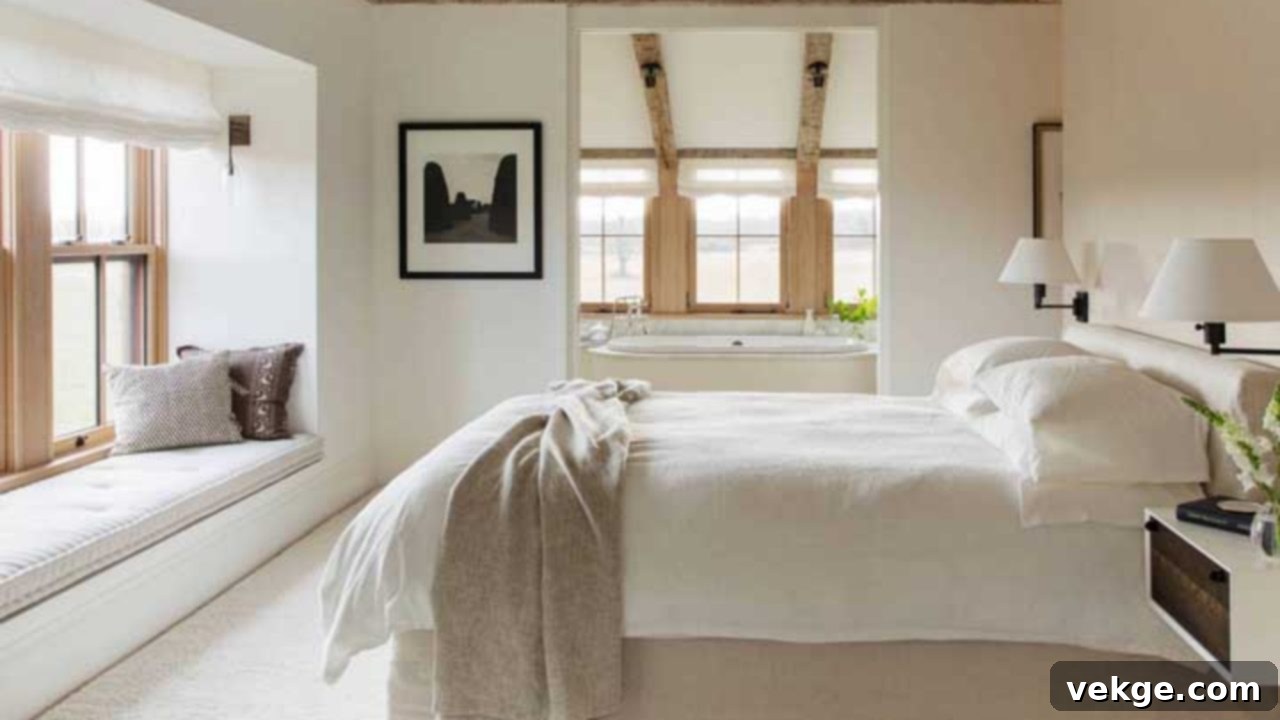The Ultimate Guide to Pairing Furniture with Off-White Paint Colors for a Harmonious Home
Off-white paint colors have become a go-to choice for interior designers and homeowners alike, and for good reason. Far from being just a plain neutral, off-white offers unparalleled versatility, adapting beautifully to various styles, lighting conditions, and color palettes. It provides a serene, sophisticated backdrop that allows other elements in your home to truly shine. Crafting a lively, joyful, and peaceful atmosphere is often an intricate dance between wall colors and the furniture that inhabits the space. Furniture isn’t merely functional; it’s a critical component of your home’s decor, shaping its character and comfort. If your walls are graced with the timeless elegance of off-white, and you’re seeking to create a perfectly coordinated and inviting interior, this guide offers expert tips and inspiration to help you pair your furniture and decor flawlessly.
1. Kitchen: Creating a Bright and Inviting Culinary Space

In the heart of the home, the kitchen, off-white walls set a clean and expansive tone. To maintain this fresh aesthetic, consider continuing the off-white theme with your cabinetry, perhaps using a slightly different shade or a subtle texture to add depth. Alternatively, light-colored cabinets in soft grays, warm beiges, or even light pastels like a muted sage green can beautifully complement off-white walls without overpowering them. Stainless steel appliances and light wood accents, such as a butcher block countertop or open shelving, can introduce warmth and modern functionality. For dining sets within the kitchen, opt for furniture with clean lines and materials like light oak, painted white wood, or even a sleek metal and glass combination. Introducing colorful kitchen sets and utensils in bright primary colors or deep jewel tones can create engaging focal points against the neutral backdrop.
2. Bedroom: A Sanctuary of Comfort and Style
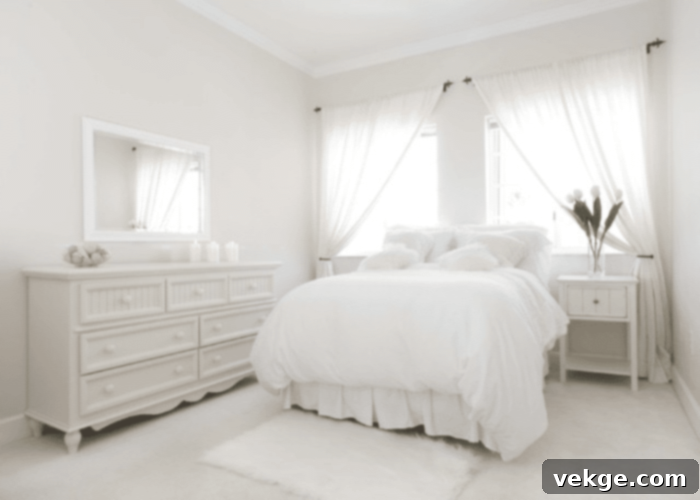
Your bedroom should be a haven of tranquility, and off-white walls are the perfect foundation for this. While painting all walls in a complementary off-white shade creates a seamless look, the real magic happens with your furniture and textiles. For bedding, embrace layers of light-colored or off-white sheets, duvets, and pillow covers in varying textures like linen, cotton, or even a chunky knit throw. This adds visual interest without introducing jarring colors. Consider a substantial headboard in an upholstered fabric (think soft grey, natural linen, or a muted blue) or a warm wood tone. Nightstands and dressers in natural wood finishes, painted whites, or even a distressed antique look can add character. Introduce pops of color with accent pillows in jewel tones like deep teal, mustard yellow, or a rich terracotta, or opt for soothing pastels to maintain a serene atmosphere.
3. Decorative Pillow Covers and Textiles: Injecting Personality
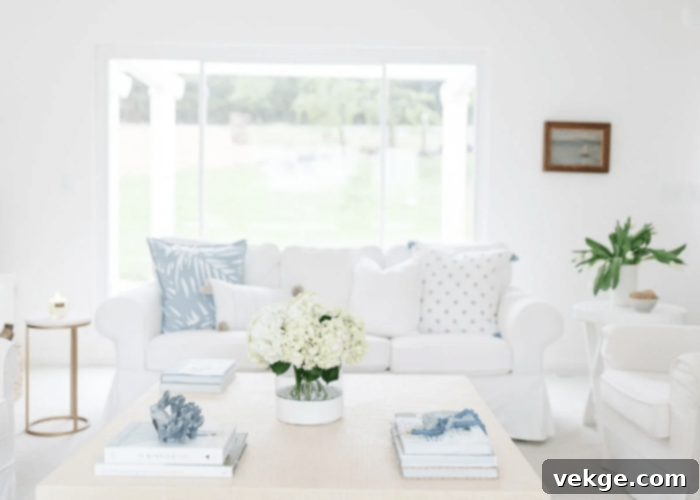
Pillow covers are more than just bedroom essentials; they are versatile accents that can transform any space, from sofas in the living room to window seats and armchairs. When pairing with off-white walls, consider the overall mood you wish to convey. For a striking and sophisticated contrast, rich hues like maroon, navy blue, emerald green, or deep charcoal gray are excellent choices, offering a touch of royalty and depth. If you prefer a softer, more romantic vibe, dusty rose, sage green, or a muted lavender can create a gentle contrast. Experiment with different textures—velvet for luxury, linen for an organic feel, or a chunky knit for warmth—to add tactile interest. Mixing solid colors with subtle patterns or geometric designs can further enhance the visual appeal, ensuring your textile choices complement the serene off-white backdrop.
4. Artworks: Elevating Your Walls with Visual Statements
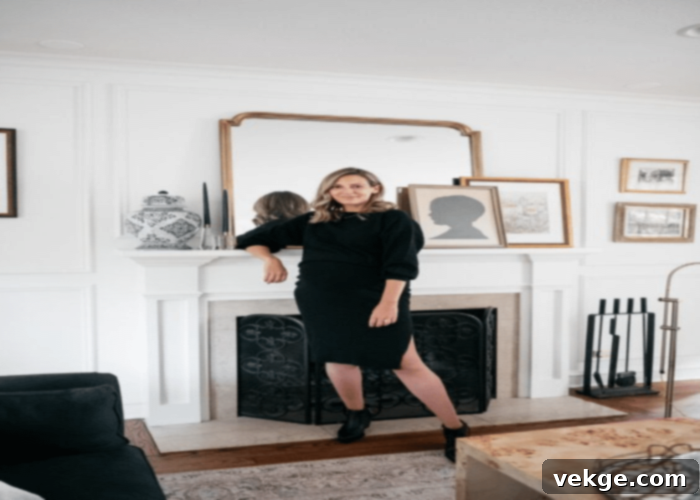
Artworks are pivotal in adding personality and focal points to any room, and off-white walls provide the perfect gallery-like setting. To harmonize with the surrounding off-white, you have several options. You can select artwork that features a color palette similar to your room’s accent colors, creating a cohesive flow. Alternatively, choose pieces with bold, contrasting colors to make a vibrant statement. The frame itself plays a crucial role; a frame in a complementary color or material can tie the artwork into the room’s scheme. For instance, a natural wood frame can add warmth, while a sleek black or metallic frame offers a modern edge. Don’t shy away from creating your own art and craft pieces; a personalized touch, whether it’s a painted canvas or a textile wall hanging, can add unique charm and perfectly align with your home’s aesthetic. Consider creating a gallery wall with a mix of art styles and frame types for dynamic visual interest.
5. Frames: Beyond Art – Defining Boundaries and Style
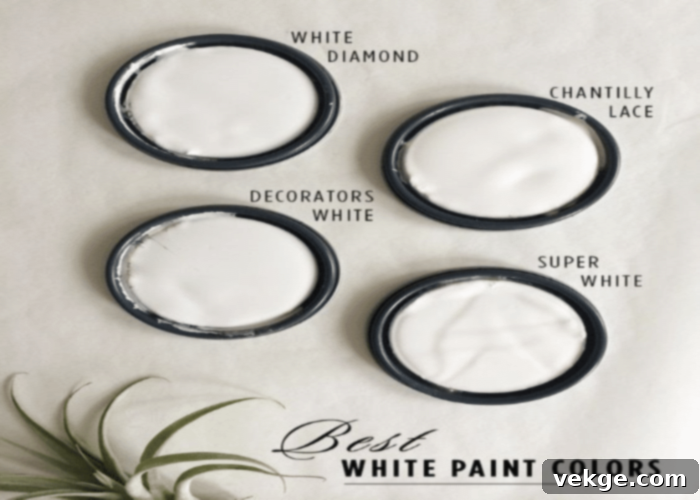
Frames extend beyond just art; they encompass mirrors, architectural details, and even the edges of built-in cabinetry or televisions. Most frames are traditionally made from wood, offering a natural warmth. With off-white walls, you can choose light-colored woods such as maple, birch, or natural oak for a subtle, organic feel. For a more dramatic effect, consider dark espresso or black frames which provide a crisp contrast. Alternatively, painting frames in a color that complements your interior scheme—perhaps a soft sage green, a muted blue, or a charcoal gray—can create a cohesive and customized look. Metallic frames in gold, brass, or brushed nickel can add a touch of glamour and sophistication, reflecting light beautifully against the off-white backdrop. These elements, whether for artworks, mirrors, or structural details, contribute significantly to the overall design narrative of your home.
6. Curtains: Softening Light and Adding Elegance
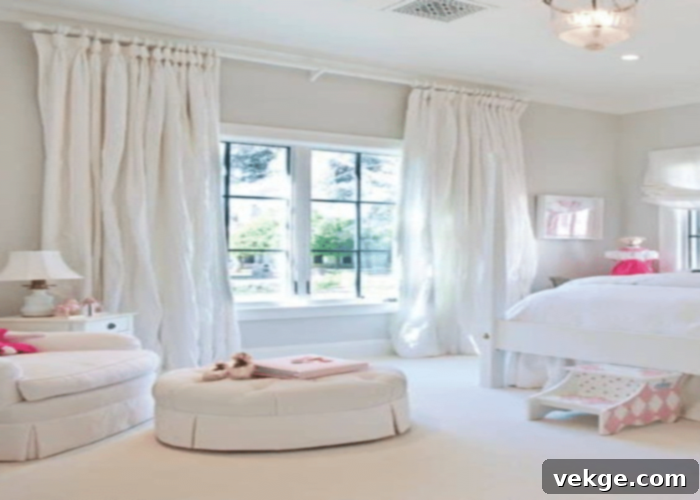
Curtains are an indispensable interior element, offering both aesthetic appeal and practical benefits. When decorating with off-white walls, avoid heavy, dark-colored curtains that can make a room feel smaller and absorb light. Instead, opt for curtains in light, airy hues such as crisp white, various shades of off-white (with different undertones for subtle variation), or soft pastel colors like blush pink, sky blue, or mint green. Sheer or semi-sheer fabrics like linen or cotton allow ample natural light to filter into the house, creating a bright and inviting atmosphere, while still providing a touch of privacy. For rooms requiring more light control or insulation, consider blackout liners with lighter-colored outer fabrics. The texture of the fabric also matters; a subtle weave can add visual interest without competing with other elements. Choosing curtains that extend from floor to ceiling can create an illusion of height, enhancing the spacious feel of a room with off-white walls.
7. Dining Table: The Centerpiece of Gatherings
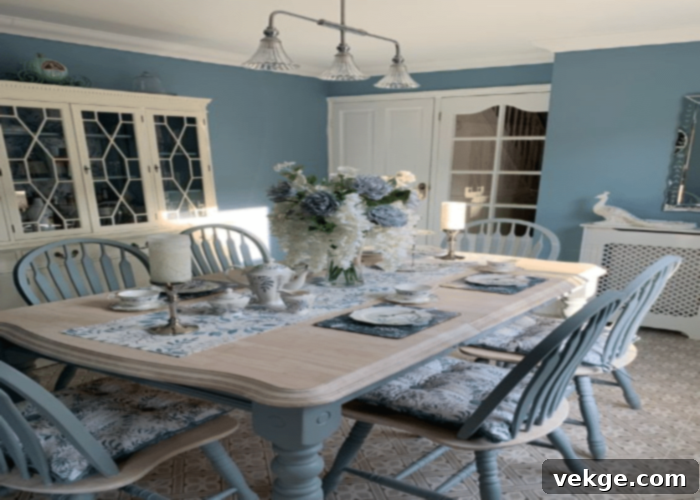
The dining table is a significant piece of furniture that anchors your dining area. If you already have a dining table, you can easily adapt it to complement your off-white walls through your choice of tablecloths and accessories. Select tablecloths in colors that beautifully complement the shades of off-white in your home, such as warm grays, soft blues, deep greens, or even a bold pattern with off-white as a base. Materials like natural linen or cotton can add texture and an inviting feel. If you’re choosing a new dining table, consider materials like light-toned wood (ash, maple), sleek glass with metal legs, or even a white marble top for a touch of luxury. The goal is to create a harmonious space that feels both elegant and welcoming, where the dining table serves as a focal point that enhances, rather than detracts from, the off-white backdrop.
8. Chairs: Comfort Meets Aesthetic Appeal

Chairs, whether dining chairs, accent chairs, or office seating, significantly influence the interior aesthetic. For a timeless and sophisticated look with off-white walls, consider chairs in classic colors like black or rich brown. These shades provide a strong visual anchor and a sense of grounding. If you prefer a lighter, more contemporary feel, various shades of gray—from light gray to charcoal—work wonderfully, offering a chic, neutral complement. For upholstered chairs, natural linen, tweed, or even a subtle pattern can add texture and depth. While white chairs can look crisp, they are prone to showing dirt easily, especially in high-traffic areas, so it’s often best to avoid pure white for practicality, unless they are easily washable or stain-resistant. Introducing chairs with interesting silhouettes or unique materials like rattan or metal can also add character to your off-white space.
9. Wooden Furniture: Adding Warmth and Organic Texture
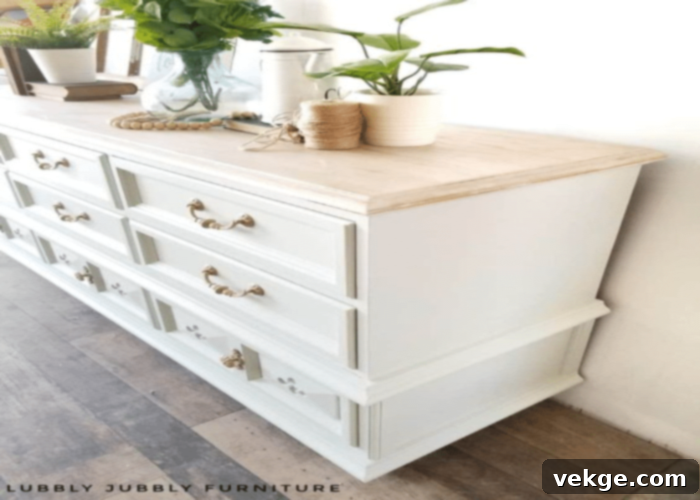
Wooden furniture, appearing in various forms like showpieces, armoires, bookshelves, or kitchen cabinets, introduces unparalleled warmth and natural beauty to any home. While we can’t alter the inherent grain and character of wood, we can certainly choose pieces or finishes that harmonize with off-white walls. Light-colored woods such as birch, maple, or light oak create a bright and airy feel, seamlessly blending with the off-white backdrop. For a richer, more grounded look, darker woods like walnut or mahogany can provide a striking contrast that adds sophistication. If you have existing wooden furniture, consider painting it in a complementary color—perhaps a soft gray, a muted blue, or even a deeper off-white shade—to refresh its look and integrate it more effectively into your decor. Distressed wood finishes can also add a charming, rustic touch, while sleek, polished wood brings a more modern sensibility. Mixing different wood tones, from light to dark, can add layers of interest to a room with off-white walls.
10. Accent Lighting and Fixtures: Illuminating Your Design
Lighting is a crucial element that can transform how off-white paint appears and how your furniture is perceived. With off-white walls, you have a perfect canvas to play with various lighting fixtures. Consider lamps with ceramic bases in muted tones, metallic finishes like brushed brass or matte black, or even natural wood. Pendant lights above a dining table or kitchen island can become sculptural elements. Wall sconces provide ambient lighting and can highlight architectural features or artwork. The color temperature of your light bulbs also matters; warmer light (2700K-3000K) can enhance the creamy undertones of off-white, creating a cozy atmosphere, while cooler light (3500K-4000K) will make off-white appear crisper and more modern. Thoughtfully placed lighting not only illuminates your space but also enhances the textures and colors of your furniture and decor.
11. Rugs and Floor Coverings: Anchoring Your Space
Rugs are often considered the fifth wall of a room, crucial for defining zones, adding warmth, and introducing color and texture. With off-white walls, the possibilities for rugs are expansive. For a cohesive look, choose rugs with subtle patterns in neutral tones like beige, cream, or light gray. If you want to introduce a pop of color, a rug in a soft blue, deep green, or a warm terracotta can serve as a beautiful anchor for your furniture, tying the room together. Textured rugs, such as jute, wool, or shag, can add tactile interest and depth. Consider the size of your rug; it should be large enough to encompass the main furniture pieces in a living area or extend beyond the dining chairs when pulled out. A well-chosen rug can significantly enhance the comfort and aesthetic appeal of a room with off-white walls, making it feel complete and inviting.
12. Greenery and Natural Elements: Bringing Life Indoors
Incorporating plants and natural elements is an effortless way to add life, color, and a sense of freshness to a room with off-white walls. The vibrant greens of plants create a beautiful, organic contrast against the neutral backdrop, making the space feel more alive and serene. Choose planters in complementary materials and colors: terracotta for a rustic touch, sleek ceramic in white or gray for a modern look, or even woven baskets for bohemian charm. Consider various plant sizes and types, from large floor plants like a Fiddle Leaf Fig or a Snake Plant, to smaller succulents or herbs on shelves or windowsills. Beyond plants, natural elements like a vase of fresh flowers, decorative wooden bowls, or stone accents can further enhance the organic and peaceful atmosphere that off-white walls inherently provide, contributing to a truly harmonious living environment.
Conclusion
Off-white paint colors offer a foundation of calm, versatility, and timeless elegance for any home. They are a canvas that allows you to express your personal style through carefully selected furniture and decor. By thoughtfully considering the interplay of colors, textures, and materials in your kitchen, bedroom, living areas, and beyond, you can create a cohesive and deeply personal space. Remember, off-white isn’t just a color; it’s a mood – one that defines tranquility, serenity, and harmony, leaving a soothing effect on everyone who experiences it. While we’ve offered numerous proven strategies here, don’t hesitate to explore your own creativity and experiment with combinations that resonate most with you. Your home is a reflection of your unique taste.
How do you like to match your furniture with the off-white paint color in your house? Let us know your opinion in the comment section below!
Frequently Asked Questions
What Color Matches Best with Off-White?
Off-white is incredibly versatile and pairs beautifully with a wide spectrum of colors. For rich, sophisticated contrasts, consider deep jewel tones like maroon, navy blue, emerald green, or even a warm gold. These colors pop against the soft background, adding depth and luxury. For a softer, more romantic aesthetic, dusty rose, sage green, or muted blues work wonderfully. Neutral companions such as warm grays, taupe, and natural wood tones also create a harmonious and inviting palette.
What Color Paint Goes Well with Off-White Furniture?
If you have off-white furniture, your wall color choices are expansive. Off-white furniture serves as an excellent neutral base, allowing you to be bold or subtle with your wall paint. Vibrant colors like bright orange, striking emerald green, or sunny yellow can create lively, energetic spaces. For a more serene and calming environment, powder blue, soft baby pink, or a gentle lavender would be lovely choices. Even a darker, richer off-white on the walls can provide a subtle, monochromatic elegance against off-white furniture, adding depth through texture rather than stark contrast.
Can You Mix White Color with Off-White Furniture?
Absolutely, mixing white and off-white is not only permissible but often encouraged! This combination is considered an iconic color pairing in interior design, creating a classic, sophisticated, and incredibly chic palette. The subtle differences in undertones between pure white and various off-white shades (e.g., creamy, greige, linen) add depth and dimension to a space without relying on bold colors. This creates an eye-catching look that feels layered and luxurious, especially when combined with different textures in your textiles and decor elements.
Does Gray Go Well with Off-White?
Yes, gray and off-white are one of the most versatile and beloved combinations in the color palette. Gray, with its diverse neutral undertones (cool grays, warm grays, greiges), provides a sophisticated and soothing counterpoint to off-white. This pairing creates a calm, contemporary, and often minimalist atmosphere. Beyond traditional grays, off-white also harmonizes beautifully with other neutrals like beiges, tans, and various shades of black and brown. These combinations form a solid foundation for almost any design style, from modern farmhouse to urban chic, offering a sense of understated elegance.
